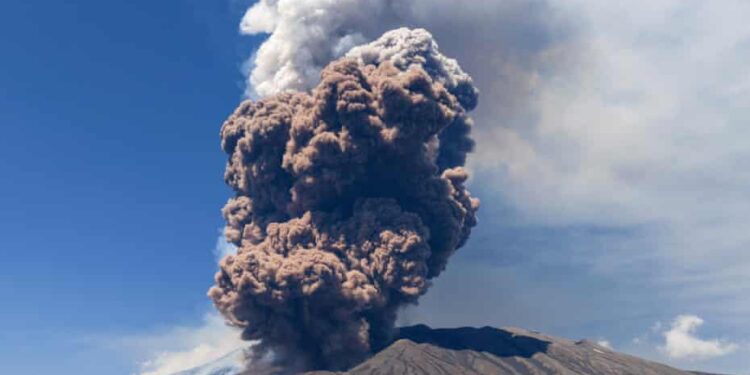On Monday, June 2, Mount Etna, Europe’s largest active volcano located in Sicily, Italy, erupted dramatically, sending thick plumes of smoke into the sky and causing panic among tourists.
The eruption, which began early in the day, was marked by strong strombolian activity and ground tremors that shook nearby homes. In response, the Volcanic Ash Advisory Center in Toulouse issued a “code red” due to volcanic ash dispersing over the region.
Videos shared on social media captured the chaos, with tourists fleeing as lava began to flow and ash clouds rose approximately 6,400 meters (4 miles) into the atmosphere. Emergency response and monitoring continued, but further details were sparse at the time of the report.
Despite the fiery spectacle, Italian authorities confirmed that the eruption did not pose any danger to the surrounding population. The Catania airport elevated its alert level, though no flight disruptions occurred. The National Institute of Geophysics and Volcanology (INGV) says the eruption was initiated by a collapse in part of the volcano’s southeast crater, triggering lava flows.
This marks the 14th eruptive phase at Etna in recent months. The danger zone remained limited to the summit, which was closed to tourists as a precaution. Sicily’s President Renato Schifani reassured the public that the lava was contained within natural boundaries.
Mount Etna stands approximately 3,300 meters tall and spans 1,200 square kilometers, making it one of Europe’s most prominent and active volcanoes.
Watch the eruption here:














